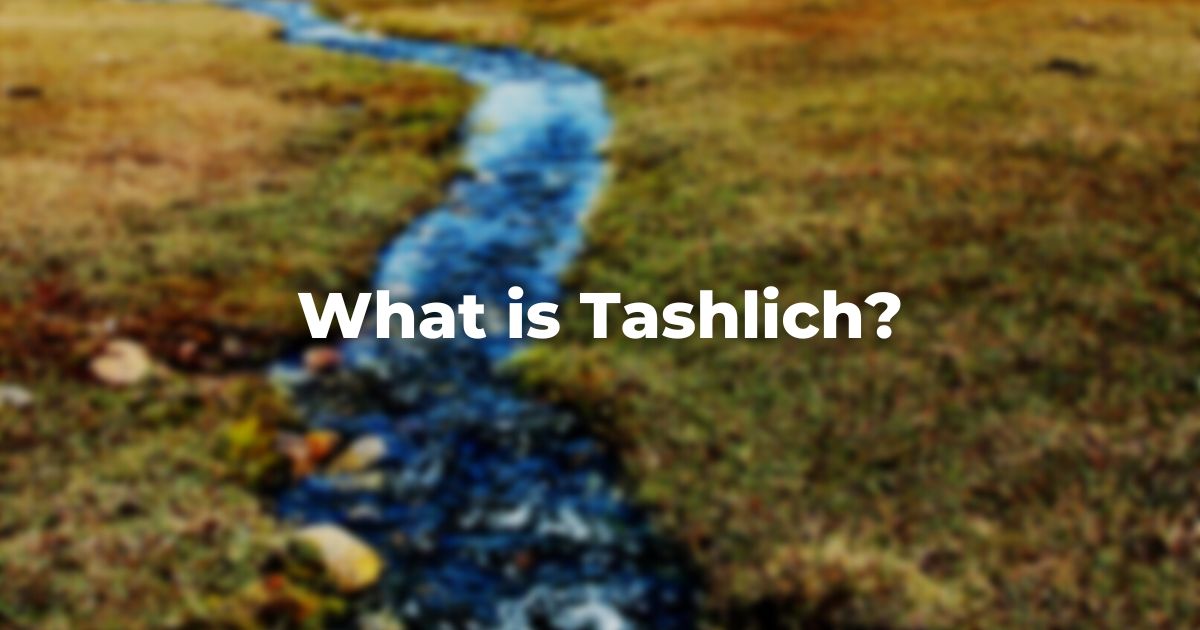This piece is part of Exploring Judaism’s 5785 High Holiday Reader. Download the whole reader here.
As a child, one of my favorite parts of the High Holidays was Tashlich (also spelled tashlikh). It was a break from the cerebral Rosh Hashanah services (I was usually there reading some volume of Harry Potter) and that all-encompassing odor of sweaty wool.
The congregation would step into the fresh air, walk a couple of blocks to a local pond, say the blessings, and throw chunks of bread into the water. It was cathartic to chuck every mistake I’d made throughout the year into the algae-riddled deep. The ritual was so tangible and relatable–both for me and all the Canadian geese.
Of course what I loved most about Tashlich was also what, historically, made it a disdained custom among the rabbis.
The History of Tashlich
Tashlich, in the scheme of Jewish history, is a relatively new custom. It is first mentioned in the Sefer Maharil, a book by the German Rabbi Jacob Moelin, who died in 1427. He describes the practice and connects it to a midrashThis word is used in two ways, as both a concept and a literature. As a concept, midrash is the expansive interpretation of biblical texts. The term is used to describe the practice of rabbinic interpretation. As a text, it refers to specific collections of interpretations, particularly from the third to ninth centuries in the Land of Israel and Babylonia. Plural: Midrashim
Read more about Satan and the binding of Isaac (because what else would you expect from midrash?).
Tashlich means “to cast” and recalls Micah 7:19:
“God will take us back in love and cover up our iniquities. You will cast v’tashlich our sins into the depths of the sea.”
Adopted from the JPS Hebrew-English TanakhAn acronym for the name of the Hebrew Bible: Torah, Neviim, and Ketuvim. Read more 2000 translation
But for some rabbis, Tashlich seemed all too easy. Who needs the month of Elul, shofars, teshuvah, fasting, hours of High Holiday services or spiritual growth to complete the process of repentance when you’ve got stale bagels?
Fortunately, most of us who’ve tried Tashlich have figured out that it’s more of a symbol than a substitute.
How to do Tashlich
The traditional Tashlich ceremony is pretty bare-bones but always open for a contemporary zuzz (I’m looking at you, Tashlich booze cruise).
Traditionally, Tashlich takes place on the afternoon of the first day of Rosh Hashanah (or the second day if day one is Shabbat). But don’t worry if you’re reading this article on the third of Tishrei, Tashlich can still be performed up through Hoshana Rabbah (especially if you are going the I’m on a boat route).
Find a body of water (or stoppered kitchen sink if you’re in a hurry), recite the traditional meditation, think of everything you’ve done wrong this year, and cast your breadcrumbs, aka your symbolic sins into the water.
Tashlich and the Environment
As much as my Tashlich nostalgia involves hunks of stale bread (and maybe some fresh bread that we mixed in to make sure we had enough for the great chuck-ening), it may be time to tweak this ritual just a little.
Throwing (a lot of) bread into natural bodies of water is just about as bad as feeding any flock of wild animals–it messes with the ecosystem, wildlife nutrition, and water quality. Some alternatives, which won’t leave you needing to make amends with the environment but still have that traditional feel, include untreated wood chips or small pebbles.
Or, if you want to take your eco-Judaism to the next level, consider a reverse Tashlich: picking up trash from a local waterfront.
Author
-

Emily Jaeger is a poet and professional writer based in Wilmington, North Carolina. Her work has appeared in Insider, News Courier, and JTA among others. https://emilyjaeger.com/
View all posts






